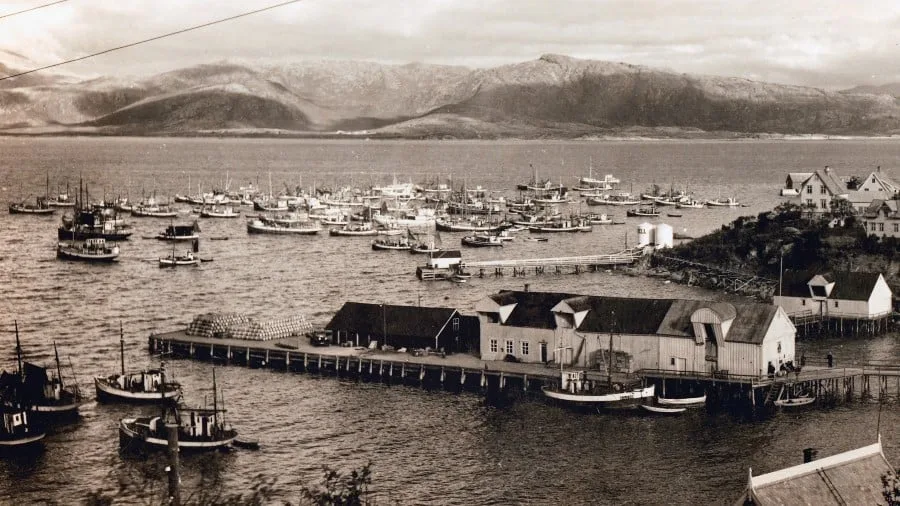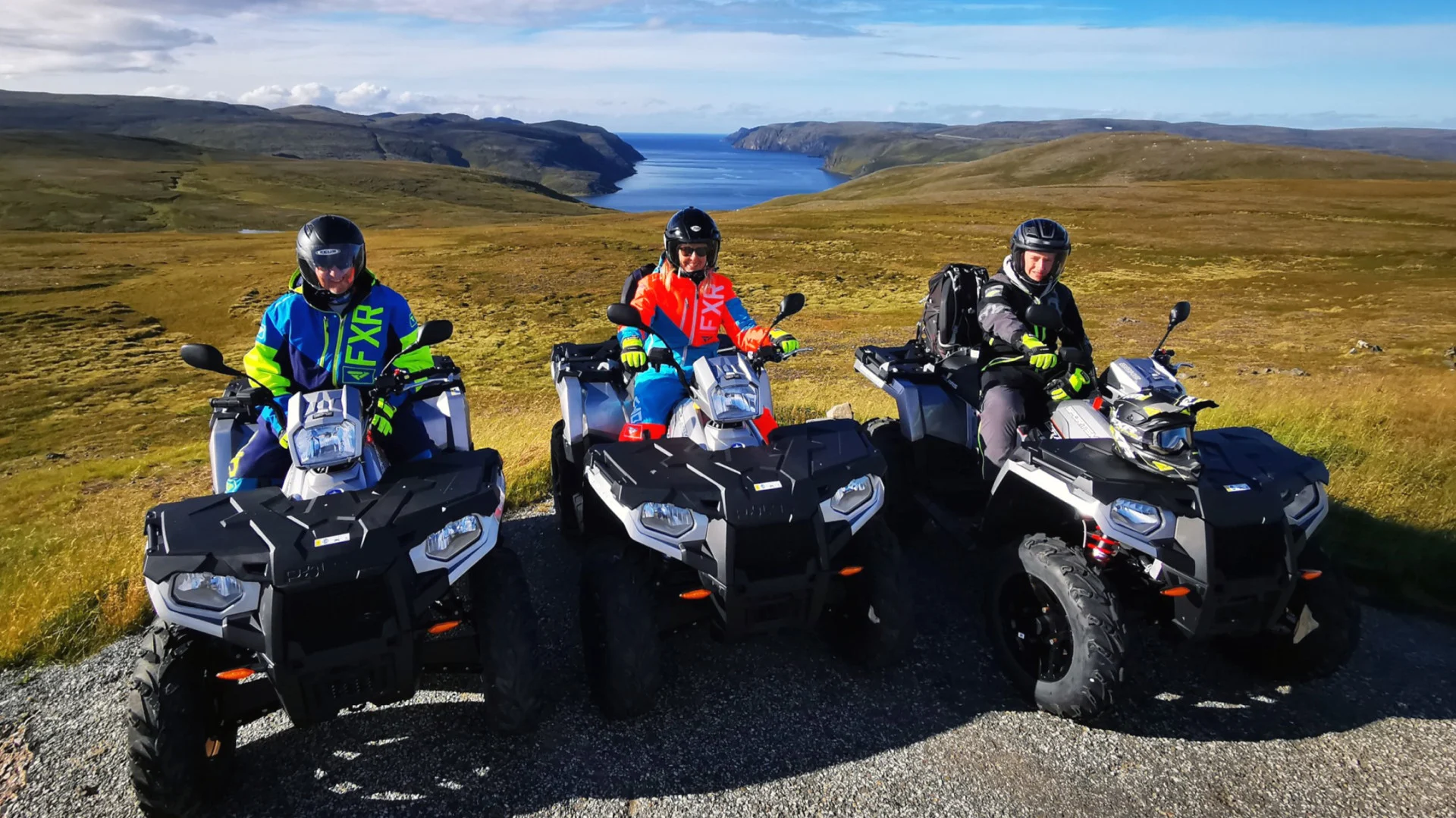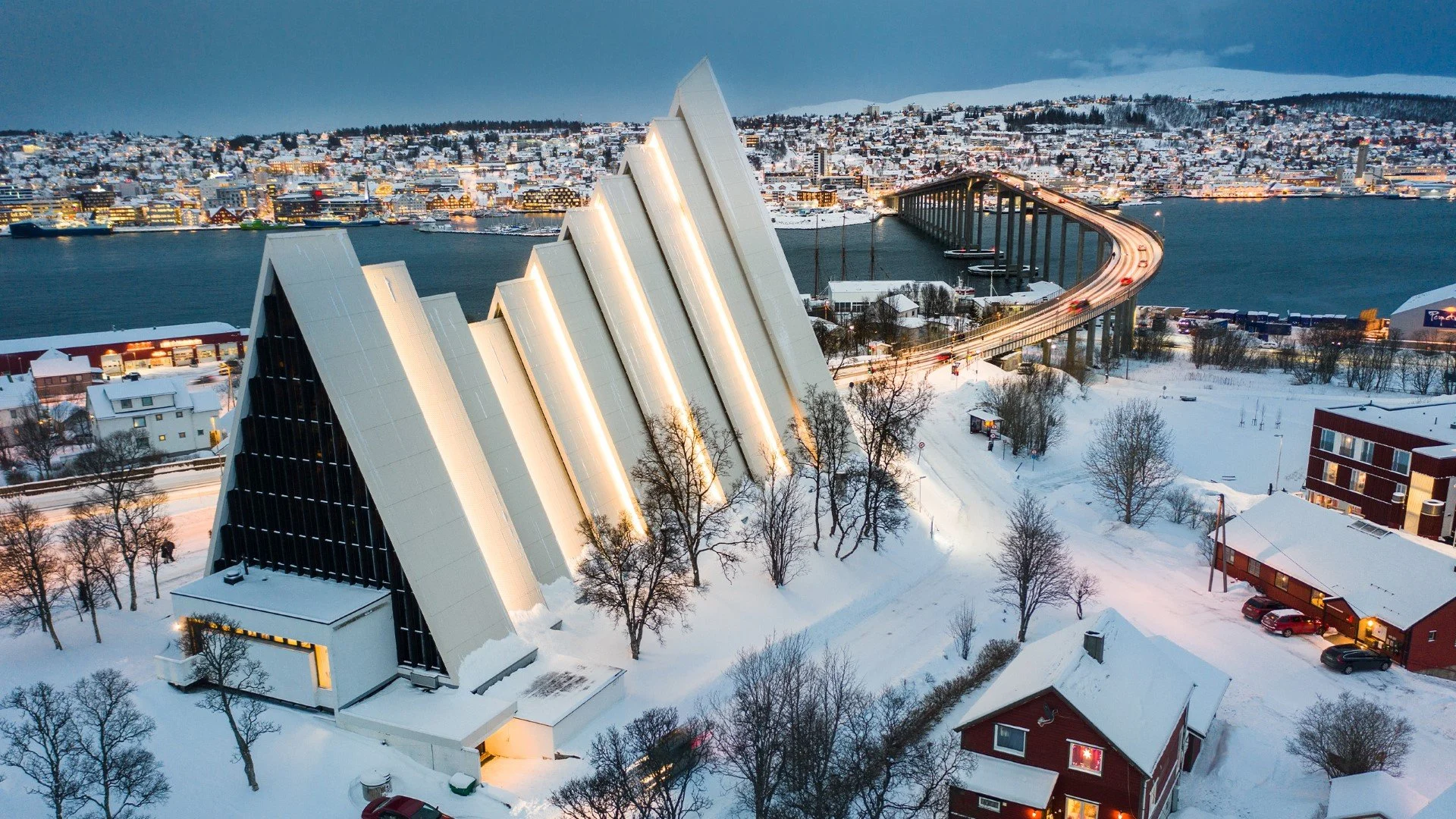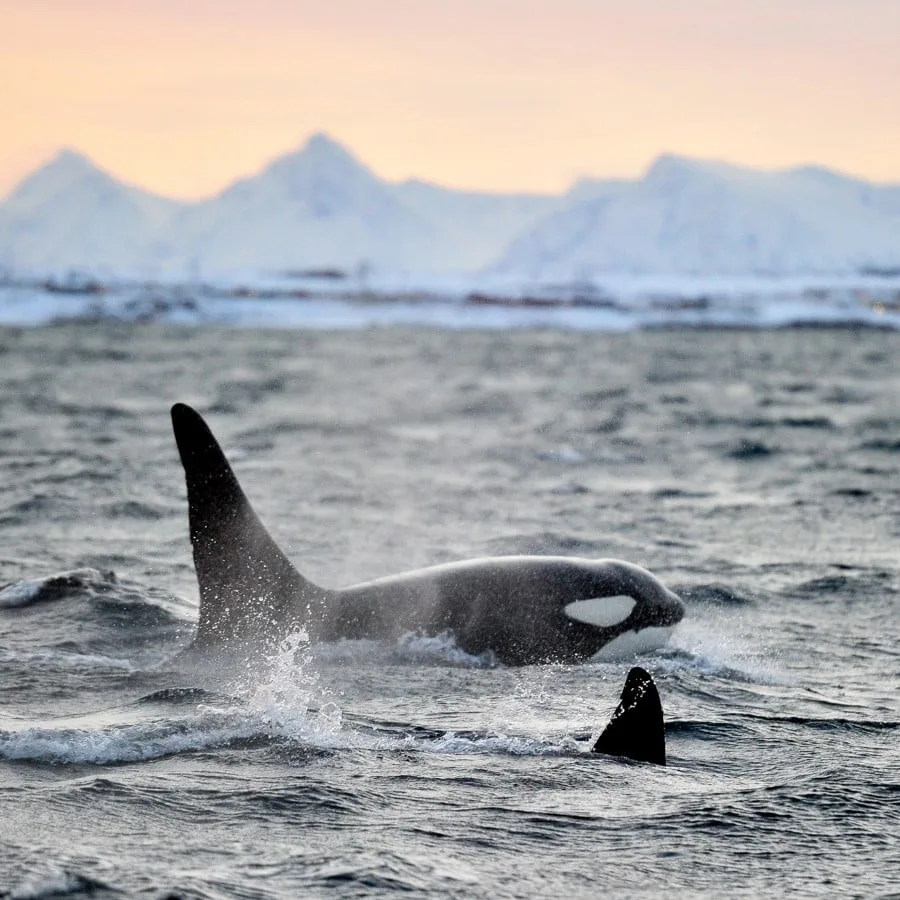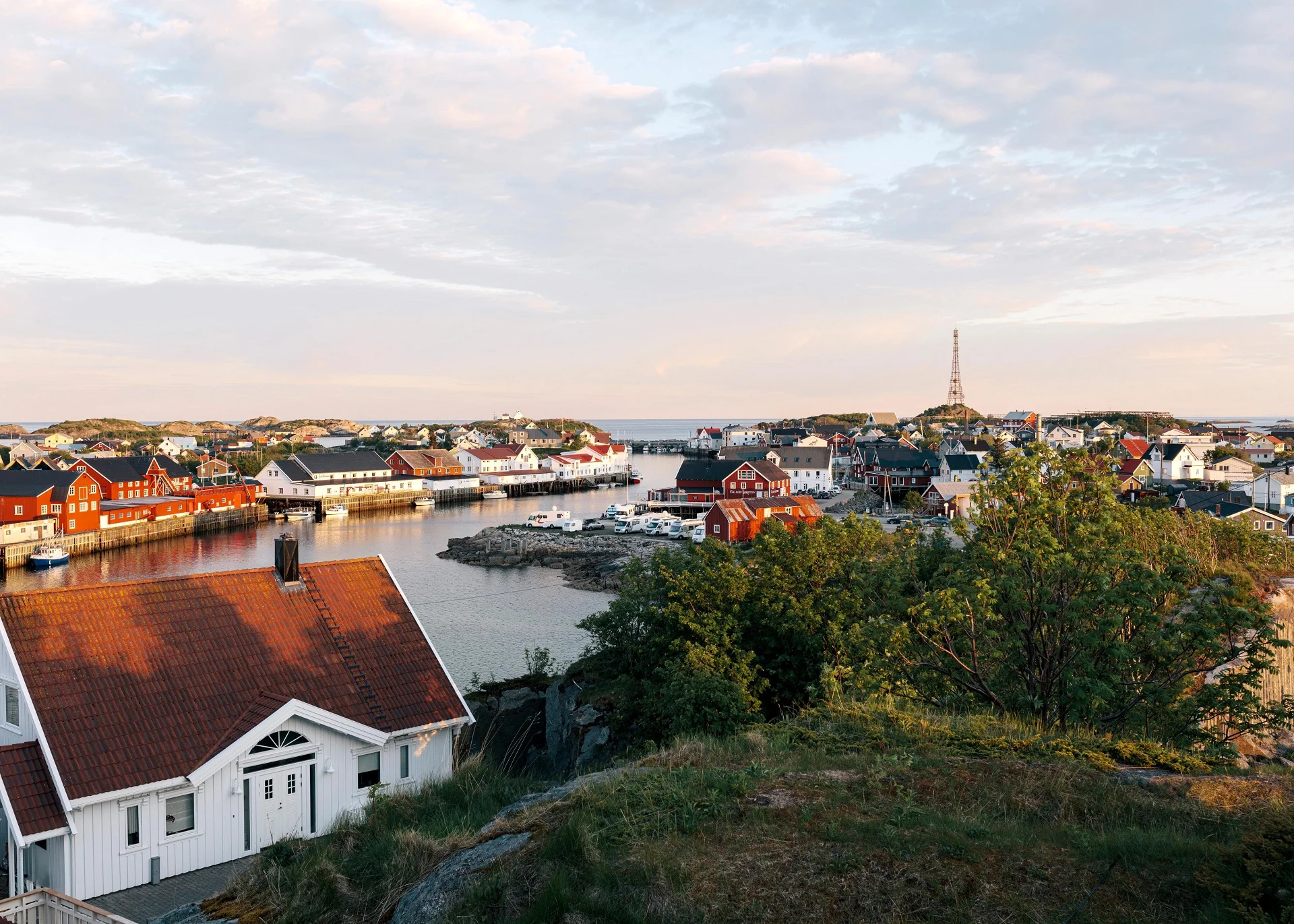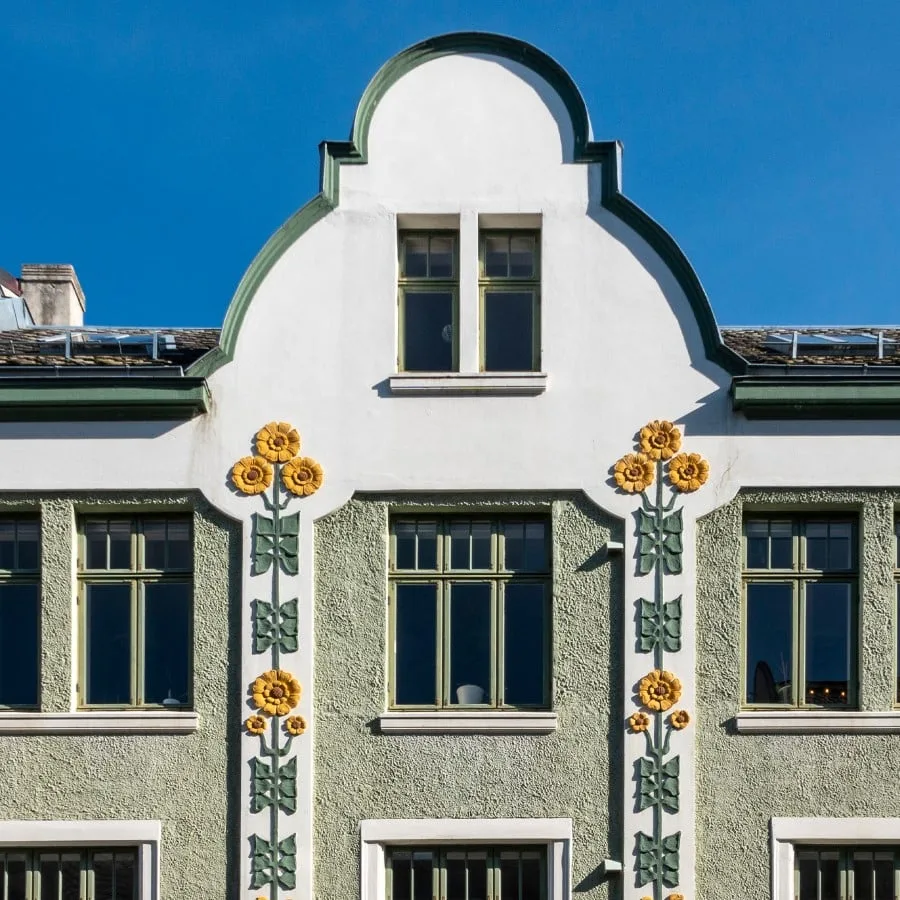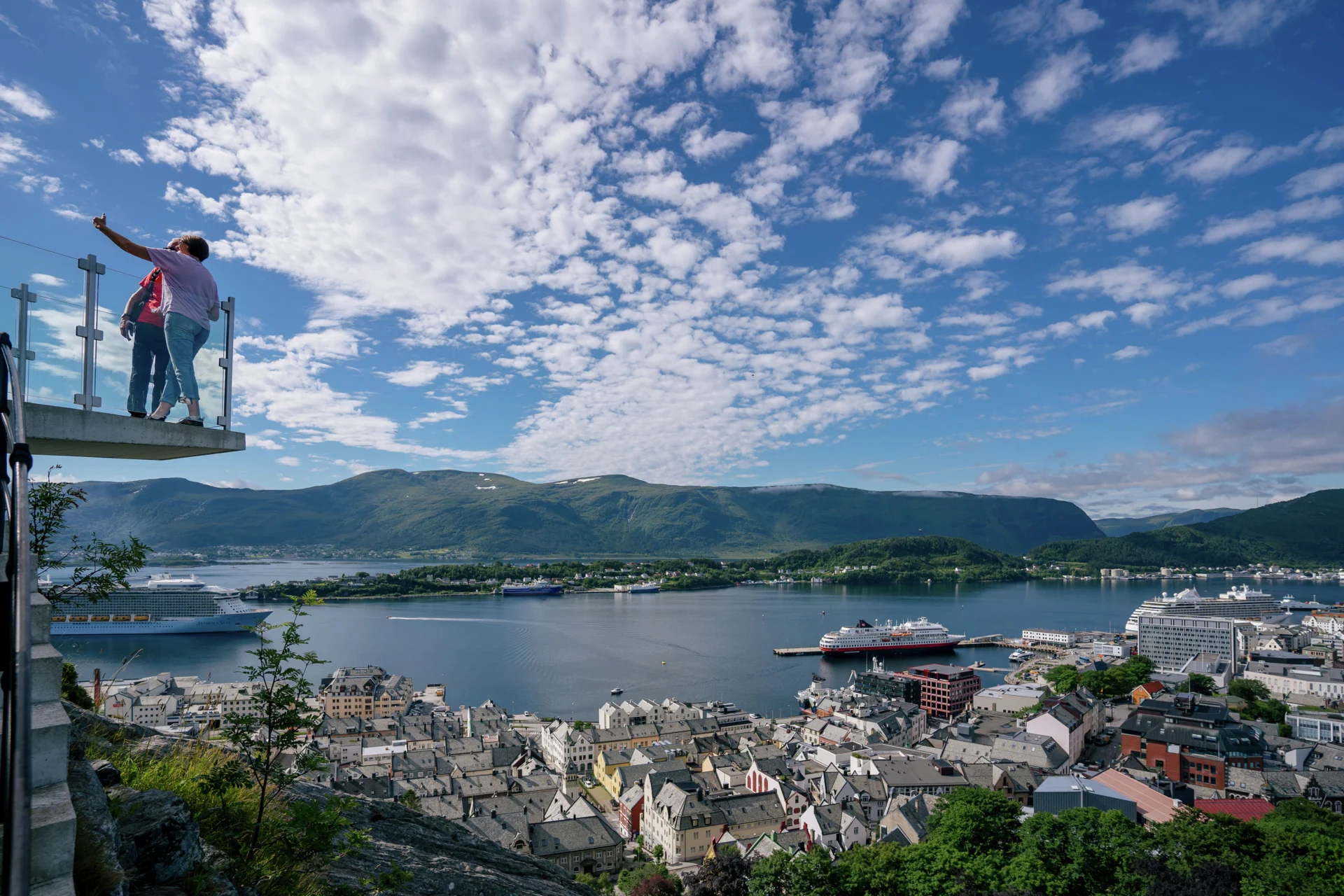Day 1
Welcome to Norway
Welcome to Norway
Bergen – gateway to the fjordsIt’s only fitting that your Norwegian adventure begins in Bergen, Norway’s cultural and artistic hotspot. Your hotel is located in the heart of the city with the rest of the day or evening spent at your leisure exploring Norway’s second-largest city.
In many ways, Bergen is like a medieval living museum. Founded by King Olaf III in 1070 AD, Bergen was Norway’s capital for many years. As you wander its cobblestone streets and alleyways, you’ll note how this bustling city has lost none of its heritage and historic charm.
Depending on how much time you have, you can take a funicular to the top of Mount Fløyen. At the summit, you’ll be able to take in spectacular views of Bergen, its neighbouring fjords and surrounding mountains.
For dinner, what better place to go than the fish market in the city centre? There, various indoor stalls cook fresh seafood on the spot for you, filling the air with appetite-arousing aromas.
*Please note that if the date you make your booking is less than 90 days before your chosen departure date, your voyage will start on Day 2 in Bergen.
Day 2
Exploring Norway’s cultural hub
Exploring Norway’s cultural hub
Bergen – gateway to the fjordsAfter breakfast at your hotel, you’ll go on a guided sightseeing tour of Bergen. Enjoy visiting well-known sites such as Nordnes peninsula, medieval Håkon’s Hall, the Renaissance-era Rosenkrantz Tower, and 12th century St Mary’s Church, known as Mariakirken in Norwegian.
Your tour will also take in the UNESCO-listed buildings in the Bryggen district. Once the haunt of 14th century Hanseatic League traders, these colourful wooden wharves now house artisanal boutiques and galleries ideal for souvenir shopping.
The tour will end at the pier where your ship, MS Trollfjord, is waiting to depart by mid-afternoon. Once we’ve welcomed you aboard and you’ve settled into your cabin or suite, you’ll meet your Coastal Experience Team. You’ll get to know each member of the team well as they give lectures and organise onboard activities for you throughout your voyage.
Grab yourself a drink in the ship’s two-storey panorama lounge and meet your fellow guests. As the ship sails from Bergen and into Hjeltefjord, your scenic adventure along Norway’s coast is underway.
Day 3
Perfect panoramas
Perfect panoramas
Molde – the City of RosesMolde is the capital and commercial centre of Romsdalen, which sits on the southern coast of the Romsdal Peninsula. We’ve stopped at this port many times before on our Coastal Express route, but this time we’ll be making a much longer stop, so you’ll have all the time you need to get your fill of the town.
There are optional activities organised by your Coastal Experience Team that add to your experience of Molde. Accessible nearby on an optional excursion is the Atlantic Road, an icon of the Norwegian coast that often features in Hollywood movies.
If the weather is favourable and time permits, join us on an optional hike up to Varden viewpoint for the best panoramic views of the area. Gaze at the town from above at a height of 402 metres above sea level and admire the 222 snowy peaks across Moldefjord.
If you prefer to stay closer to the ground, you can pop into the Romsdal Museum, one of Norway’s largest folk museums about ten minutes away from the town centre.
Day 4
An ancient fishing town
An ancient fishing town
Rørvik - surrounded by thousands of islandsThe Vikna archipelago is a chain of around 6,000 islands, islets and skerries. The largest of the chain, Inner-Vikna, is where we’ll make our next stop. We aim to dock at the port town of Rørvik around mid-morning, remaining there most of the day.
The town and its surrounding areas have a long history, with burial mounds found there that date back to ancient times. The area’s maritime legacy is well-documented across Rørvik’s many museums, particularly The Norwegian Coastal Museum. Time travel through the history of Rørvik on an optional guided tour across three of the town’s key museums.
Similarly, at SalmoNor visiting centre, you can take a tour of a modern salmon farm and find out more about the Norwegian aquaculture industry that supplies the world with tasty Nordic salmon.
Another major export is cod, and the town even has an annual Cod Festival in March. This species of fish is especially common in the waters of the archipelago during winter, so why not indulge yourself in some fresh cod cakes while here.
Day 5
Village life and fjord nature
Village life and fjord nature
LødingenThe administrative centre of a municipality with the same name, Lødingen is a village on the southwestern shore of Hinnøya, with a population of under 2,000. This is a port that our ships used to visit on one of our earlier coastal routes and returning here is a kind of homecoming for us.
We’ll dock at around midday, using Lødingen as a base for a few hours to explore more of Hinnøya island, Norway’s largest island south of Svalbard. Wander the streets near the port and admire the traditional red fishing huts, or rorbuer, that line the shore. As you walk, you’ll likely notice the calming atmosphere that village life brings.
The highlight of this visit has to be the breathtaking fjords and mountains that the Norwegian coast is so famous for. Branching off of Andfjord, Gullesfjord cuts into the north side of Hinnøya, bordered by pristine mountain ranges. The area is popular among campers, who stay on the campsite or in cabins and fish for cod in the fjord during winter.
From Lødingen, you can join a handful of optional excursions, including a fishing trip with a local, an immersive Sámi experience to learn more about their culture and history, or a visit to Dampskipsbrygga, Lødingen’s former wharf.
Day 6
The city of Northern Lights
The city of Northern Lights
AltaAlta is one of the bigger coastal towns we visit, with a population of over 10,000 people. A particularly famous part of the town is Alta River, one of Norway’s best salmon rivers. Here, large salmon are regularly caught, with some even weighing up to 24 kg. You won’t regret trying some fresh grilled salmon in one of the local restaurants.
At 70 degrees north, this town is still far above the Arctic Circle. The area is known for particularly good Northern Lights visibility, so keep your camera ready. If the skies are clear and the conditions are right during the winter season, you should be able to get some amazing shots of the lights dancing above you.
You can learn more about this incredible natural light show on a guided tour of the town. The Northern Lights Cathedral even has an exhibition showing how Alta became the epicentre for ground-breaking research of the Aurora Borealis between the 19th and 20th centuries.
Increased snowfall in the winter allows for some truly authentic Arctic excursions. The snow and climate of Alta also creates the perfect conditions to build and maintain the Igloo Hotel, located on the banks of river Alta.
During winter, you’ll have the option of visiting and touring the world’s northernmost ice hotel, built out of snow and ice every winter and carved with different artistic themes by local sculptors. Head to the hotel’s ice bar, decorated with handcrafted ice sculptures and order a drink in an ice glass – no ice cubes needed.

Day 7
The northernmost point
The northernmost point
Honningsvåg – gateway to the North CapeYou have a full and exciting day to look forward to in Honningsvåg. The northernmost city on the mainland, Honningsvåg’s landscape is quite distinctive, with barely any trees or bushes. This far north, winters are long and snowfall is high, so get ready for some fantastic winter scenery and activities.
Feel the snow crunching under your snowshoes as you hike across the plains. You might even be able to try your hand at ice fishing, a beloved winter tradition in the far north. Get a taste of the local delicacy, king crab, which is caught in the waters around Honningsvåg and served year-round. Admire local art in the Once Upon a Dream art gallery, and don’t miss the Honningsvåg Church. This is the oldest building in the area, dating back to 1885.
The highlight of any trip to Honningsvåg is a visit to the North Cape. This is one of the northernmost points of mainland Europe, which we will access by snowmobile during the snowy winter months. Standing near the northern edge of Norway and looking out over the Barents Sea under the polar night sky is a truly special experience. Add the ethereal Northern Lights dancing in the sky above, and you’ve got a sight you’ll never forget.
The cape is marked with a famous globe monument, which demands a selfie or two… or five. When you’re ready, head inside North Cape Hall to warm up, and learn about life in the High Arctic through a short film and a variety of exhibits.
Having reached the northernmost point of our voyage, we’ll turn around and begin going south as we sail away in the evening.
Day 8
The gateway to the Arctic
The gateway to the Arctic
Tromsø – gateway to the ArcticToday you’ll get the chance to see the Arctic Capital itself. Often called the “gateway to the Arctic”, Tromsø is Norway's northernmost university city, and the ideal place to enjoy some proper winter activities, like dog sledding and snowshoeing.
Sitting around 217 miles north of the Arctic Circle, Tromsø experiences Polar Night for just over a month in the winter, and will give you a great chance of seeing the Northern Lights.
This urban city is buzzing with life, with everything from trendy restaurants and cafés to boutique shops selling local crafts and produce, and even high fashion. MS Trollfjord will be in port here for the whole day, giving you plenty of time to both join optional excursions and explore the city yourself.
Some of the exhilarating activities on offer will get you closer to nature and Tromsø’s wildlife. Go on a mini polar expedition, as you cross the snowy Arctic on a sled pulled by husky dogs. Or be immersed in Arctic serenity as you enjoy an unforgettable view of orca and humpback whales playing in their natural habitat.
For a cultural fix, learn to knit with the locals and satisfy your curiosity about daily life north of the Arctic Circle on an excursion to meet the local Sommarøy people.
Day 9
Lofoten islands and our historic birthplace
Lofoten islands and our historic birthplace
Stokmarknes – the birthplace of Hurtigruten, Svolvær – at the heart of LofotenToday, we explore Lofoten, a striking group of islands that rise out of the Norwegian Sea. As soon as you see the towering peaks around you with fishing villages clinging to their sides, you’ll understand why this island chain is so often praised as one of Norway’s most stunning locations.
We can’t visit the area without spending some time in Stokmarknes. This historic town is part of Vesterålen, an archipelago just northeast of Lofoten. Of all the places we visit, this one is particularly special to us. It was here that the Original Coastal Express was founded in 1893 by shipping pioneer Richard With.
The Coastal Express soon became a lifeline for Norway’s remote coastal communities, and fittingly, our legacy has been immortalised in the place where it all began. Standing on the waterfront, you’ll find our 1956 ship MS Finnmarken, encased in a glass building like a ship in a bottle.
This is Hurtigrutemuseet, the museum that chronicles our history as Norway’s leading coastal exploration cruise line from start until now. On a guided tour, you can explore the retired vessel and experience the atmosphere of a past era.
We’ll dock in the town of Svolvær in the afternoon. Located on the island of Austvågøya in the south of Lofoten, Svolvær is the biggest town of the archipelago, humming with shops, restaurants, galleries, and cafés to enjoy. You can also admire views of the Svolvær Goat, a nearby mountain named for resembling a goat and its horns.
A variety of optional excursions are available from Svolvær, including winter fishing, paddling along the coastline in a kayak, or embarking on a bus tour to learn more about Lofoten’s history.
Day 10
Distinctive Nordic nature
Distinctive Nordic nature
Brønnøysund – coastal charm right in the middle of NorwaySurrounded by islands and water, Brønnøysund sits on a narrow peninsula that juts out of the mainland. Around 5,000 people live in this small town, many in colourful houses against a backdrop of gentle slopes and dramatic mountain peaks.
Enjoy the bustling atmosphere of the harbour and take a walk along Havnegata. Drop into one of the pubs for a snack, or treat yourself to a meal in a local restaurant. Wander the visitors’ marina, or visit an 1870 Neo-Gothic stone church.
As we sail, look out for the Vega archipelago, a cluster of some 6,500 islands, skerries, and islets. There’s a UNESCO World Heritage Centre on the island of Gardsøy which showcases how highly prized eider down is harvested from the local eider ducks by providing little huts for them to build their nests in.
On an island south of Brønnøysund, you’ll find Torghatten mountain, recognisable by a natural tunnel that runs through the centre. According to local lore, the hole is the result of a troll who fired an arrow at a young woman who had rejected his advances. As the Troll King threw his hat to protect her, the sun began to rise, turning the hat to stone with a hole in the middle from the arrow.
On an optional excursion, you can take an hour’s walk up to the hole in the mountain. Peer through the tunnel and enjoy the view of the islands around.
Day 11
A picturesque town
A picturesque town
ÅlesundAfter a hearty breakfast on the ship, we’ll dock mid-morning at Ålesund, a town that spreads out across a string of islands.
As we approach the shore, you might first notice the distinctive style of architecture. Every detail of the buildings, from the bright colours to the rounded spires, was inspired by the Art Nouveau style, which was popular in the early 1900s. Almost the entire town received a makeover in the style when it was rebuilt after a major fire in 1904.
As you leave the waterfront, you’ll find yourself in a fairy-tale town, wandering narrow streets lined with unique houses. Opt for a walking tour of Ålesund’s distinctive Art Nouveau architecture, then taste some of the best small-brewery beer from the local area. You could also venture out of town for a scenic bus tour to Alnes, and experience the Saga Islands, a lighthouse, and countless tales of the Vikings.
If your camera’s memory card isn’t already full after this, you can get impressive photos of the archipelago from the nearby Mount Aksla viewpoint. The 418 steps leading there might look intimidating, but the views are well worth the effort.
Day 12
Viking history
Viking history
The Hardangerfjord, HaugesundJourneying south along Norway’s west coast, we sail past some of Norway’s most famous fjords, none more so than Hardangerfjord.
At 179 kilometres in length, it is the second longest fjord in the country, and fifth longest in the world.
The stunning waterway is one of Norway’s finest. See mountain scenery everywhere you look, with the white peaks that tower over the fjord being reflected in the shimmering water below.
The region is famous for its apple products, from jams and juice to its award-winning cider, which one food writer described as ‘Nordic Champagne’.
Weather permitting, we may be able to dock at Rosendal or one of the other picturesque settlements that cling to the shores by the fjord. A small, charming village, Rosendal’s main highlight is the 16th century Barony, a manor famous for its beautiful rose garden and landscaped grounds.
We’ll reach Haugesund, the ‘Home of the Viking Kings’ in the afternoon. The nickname is inspired by sites such as St. Olav’s Church, built in 1250 by King Håkon Hå. There’s also Haraldshaugen, a national monument reputed to be the first king’s burial site.
Step back in time to the Viking Age with a visit to the fascinating exhibits at Nordvegen Visiting Centre, or step out on a walk with a local artist to learn about glassblowing, architecture and Marilyn Monroe! For a more adventurous and unique perspective on Norway’s Viking history, try the Viking Experience by RIB along the beautiful and narrow Norway strait.
Day 13
The city of lighthouses
The city of lighthouses
KristiansandLocated on the southern tip of the country, Kristiansand is Norway’s fifth-largest city. We aim to be at port from morning to late afternoon, giving you plenty of time to explore.
As you walk around Kristiansand, you might notice that the city is built on a uniform grid plan, with several straight roads running from the harbour all the way through the city. These roads are lined with architecture from different eras – evidence of the extensive rebuilding the city underwent after major fires in the 18th and 19th centuries and an attack during World War II.
Kristiansand is on a mission to become the most sustainable port in Europe. Find out more about this admirable goal on an optional excursion that includes a visit to Odderøya Island. Here, you can see beautiful views of the ocean and city and visit 18th-century military barracks that have been transformed into creative artist studios running several sustainable initiatives.
Kristiansand’s 20th-century military past is the focus of an optional excursion to Batterie Vara. Originally built as a German fort in World War II, it features the world’s second-largest cannon ever mounted on land.
Another optional excursion takes you to the working Lindesnes Lighthouse, which marks Norway’s southernmost point. See the beacon that has been guiding seafarers to safety on dark nights since the early 20th century and learn about the site’s long history, which goes all the way back to 1656.
Back on the ship, we’ll end our cruise on a high note with a farewell dinner. Take this chance to swap stories and show photos to your fellow travellers one last time.
Day 14
Discovering Norway's capital
Discovering Norway's capital
OsloFrom the south to the north, and back down to the south, reflect on your journey as you watch our approach to our last port of call, Oslo, in the early morning. Say your goodbyes to the crew and disembark the ship into the capital, which marks the end of your travels with us.
You’ve sailed on the North Cape Line, exploring Norway’s coastal cities and villages all the way to the top of the European continent. During the journey, you’ll have experienced Norway’s varied climate, seen majestic mountains and fjords, and maybe gazed up in awe at the Northern Lights once or several times.
We hope you’ll cherish each of the memories of the North Cape Line that you’ll take home with you. Come sail with us again soon on another iconic voyage of our spectacular home: the Norwegian coast.

















